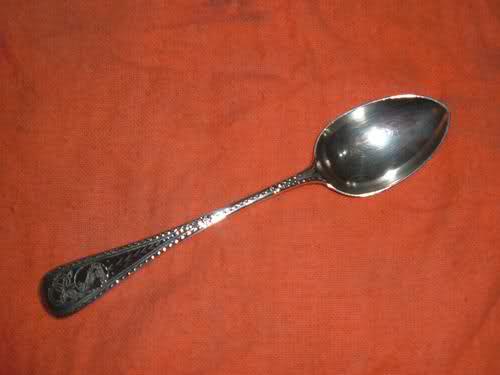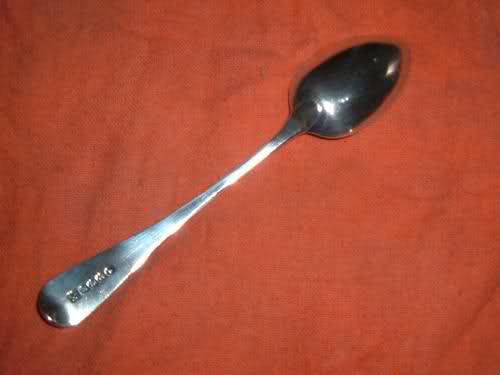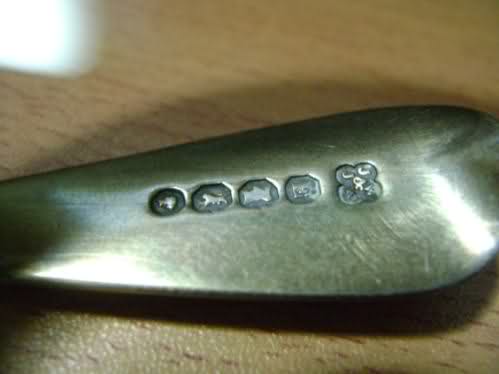Hi, i have this spoon, how can i tell if it is fake? how much does it worth? thanks!!



Hi, i have this spoon, how can i tell if it is fake? how much does it worth? thanks!!



Your spoon is genuine as far as I can tell from the pictures. The hallmarks show that it was made by the Bristol company of Josiah Williams & Co ( the initials are those of the partners in the company, James & Josiah Williams) and was assayed in Exeter in 1861/62. You don’t say what size the spoon is, but from the relative proportions of the hallmark and handle width I assume it is a table spoon about 8 inches (20cm) long. It seems to be in good condition with crisp engraving, reasonably clear hallmark and good tip so value is going to be about £30-£40.
Thanks for the answer!! It is 6 1/2 Inches, but I thought it might be fake because the tail from the lion passant is not exactly the same as the one for exeter on the bradbury
i didnt expect to worth that much! I´m from argentina, i purchased it for £7
I´ve seen similar spoons that are around £5, this one is worth that money because it is from Exeter??
Thanks!!
As it is smaller than I assumed the value is going to be lower - possibly £20 in the UK. At 6½ inches it is not even standard dessert spoon size. I included a bit more value on account of the engraving which seems quite attractive, but what the value is in Argentina I cannot say. There are 2 schools of thought about provincial silver - one says that as it is less common than London silver it is worth more; the other says that London silver is better quality so is worth more. I think that they tend to balance out and that in general values are very similar.
how can you identify the spoons are genuine and not fake . . . ???
The presence of an English Hallmark guaranteed the quality of the silver, in this case sterling silver. This is the oldest form of consumer protection legislation in the world, dating back to the 13th century. All silver and gold articles, over a specific weight, must be assayed and marked before they can be sold.
The penalties for transgressing hallmarking laws are still very severe, and it was only in 1837 that the death penalty was removed from the list.
This could still mean this the spoon or any other piece could have fake hallmarks, but spotting these fakes is a matter of experience and often common sense. Why would someone fake a spoon such as this, when it would cost less for the genuine article? Are the hallmarks constant with the period? Are they stamped as they should be?
There will always be fakes and imitations around, but in the field of silver collecting. They are a lot less common than in china, furniture or many other branches of antiques.